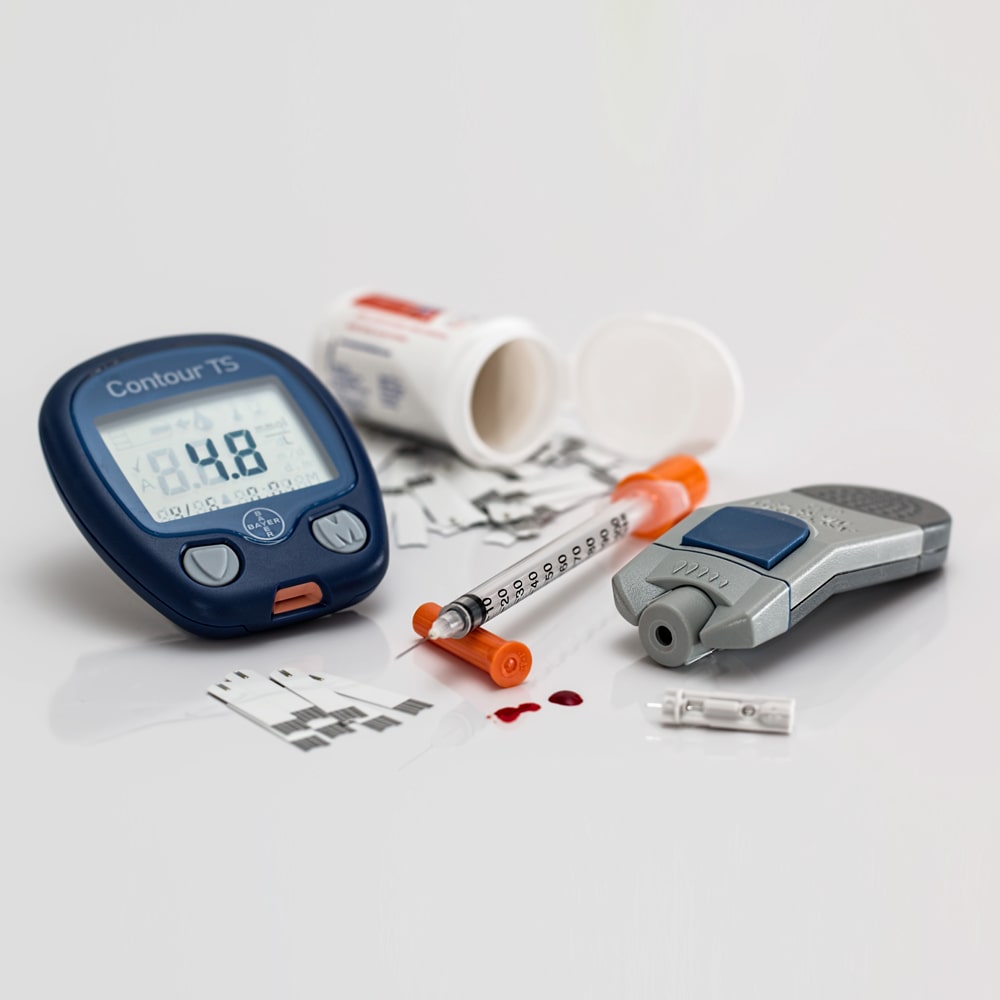
Glycemic Control
Things to know about checking blood glucose levels
The permanent control of the blood glucose level is an important component of the daily routine for diabetics. You can find out here why you should pay the utmost attention to blood glucose control.
The risk of an elevated blood glucose level
A permanently elevated blood glucose level can have devastating consequences for the human organism. In most cases, however, symptoms appear only very late, and those affected feel no pain or other discomfort at first. If blood sugar levels are chronically elevated, nerves can be affected, arteries can calcify and the blood capillaries of the kidneys and eyes can be damaged. The following long-term damage can occur:
- Neuropathy (nerve damage)
- Heart attack
- Stroke
- Diabetic foot (foot ulcer with poor chances of recovery)
- Nephropathy (kidney damage)
- Damage to the retina
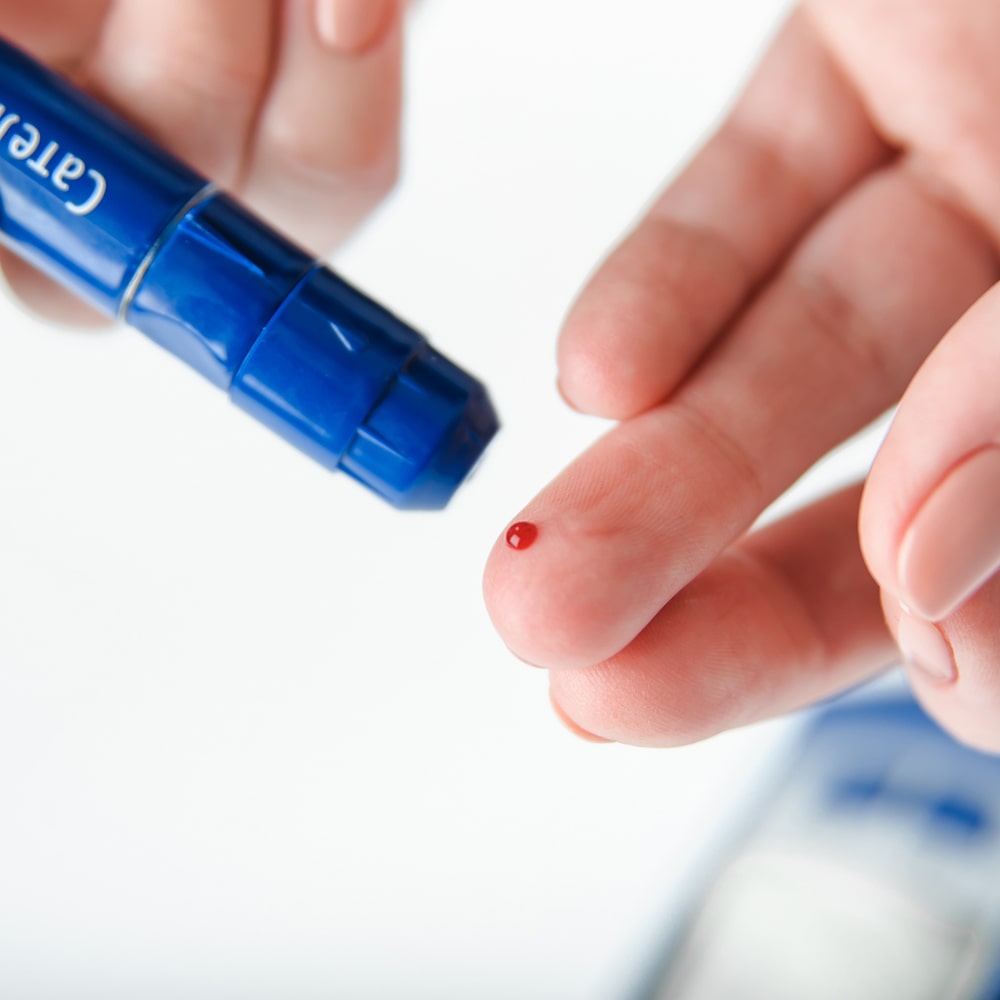
Diabetes finger and blood glucose measurement.
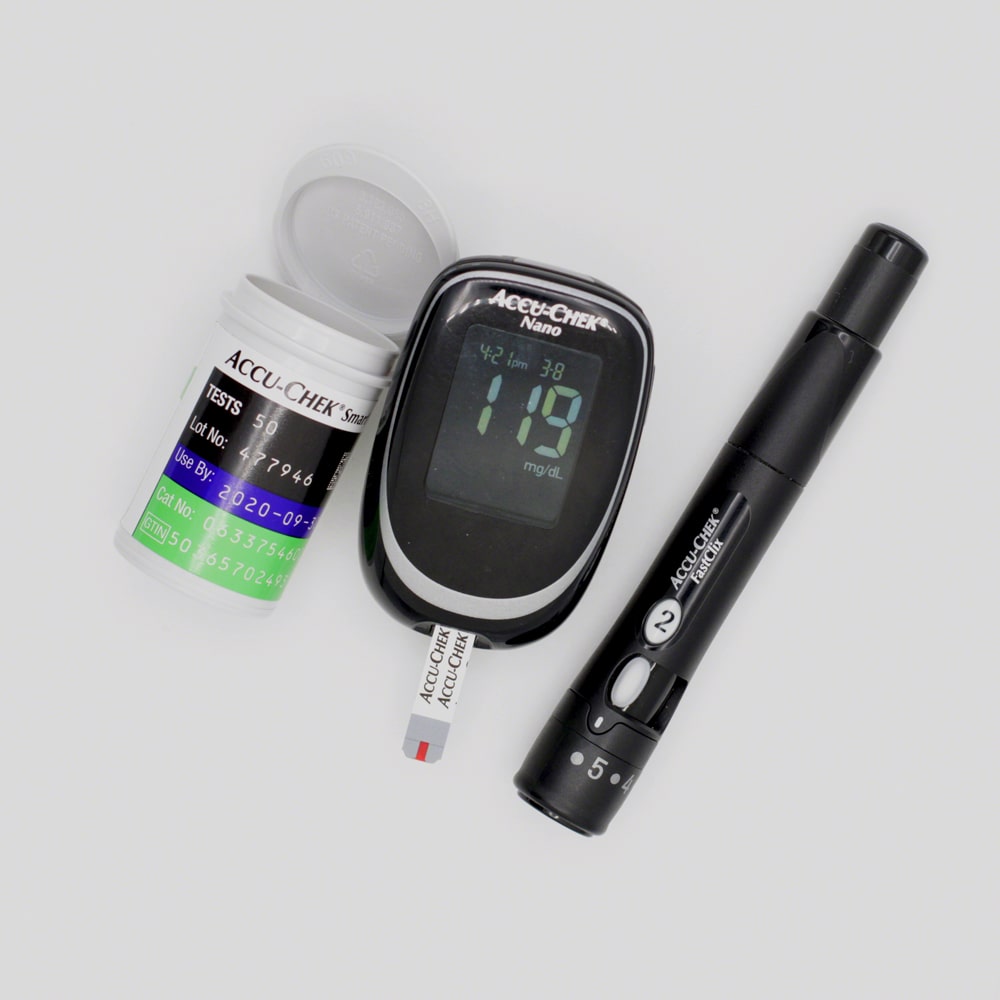
Diabetes Test Strips and Blood Glucose Tester.
Regular blood glucose monitoring is essential
Constant monitoring of blood glucose levels is essential to avoid damage to blood vessels, nerves and organs. Of particular importance here is the so-called HbA1c value, which is an indicator of the effectiveness of the therapy and the success of the blood sugar control. It is a long-term value that shows the average blood sugar level of the last eight to ten weeks. Normally, the attending physician tries to keep the HbA1c value between 6.5 and 7.5 percent with an appropriate therapy. The blood glucose value is usually measured in an empty state, about two hours after eating.
Accessories for blood glucose monitoring
To identify possible fluctuations in blood glucose levels, it can be helpful to take several snapshots of the value. The more thorough and intensive the measurements are, the better the HbA1c value can be influenced. To determine blood glucose levels, the amount of sugar in the blood serum is measured in milligrams per decilitre (mg/dl). In some cases, the percentage is also given in millimoles per litre (mmol/l). The normal range before eating is below 100 mg/dl, about two hours after eating the blood sugar level should not exceed a value of 140 mg/dl.
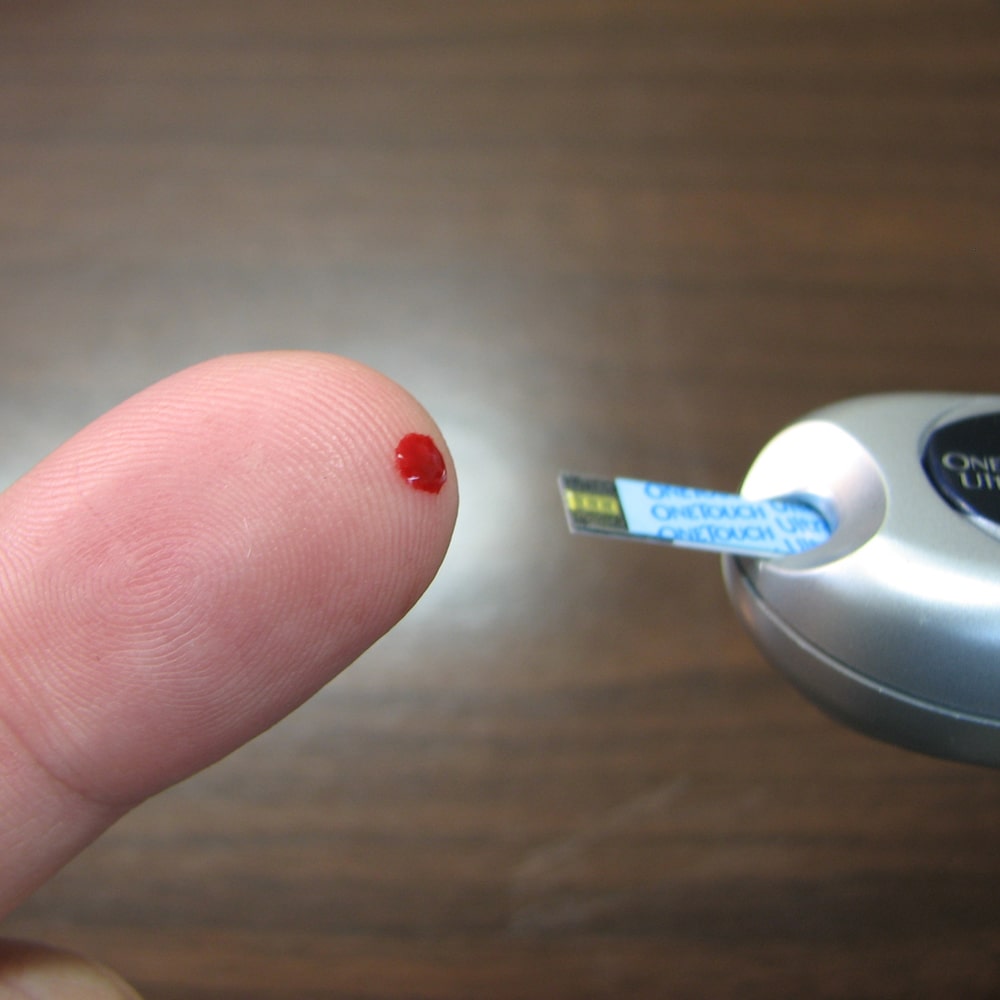
Diabetes blood glucose measurement.

Sugar consumption in diabetes.
Important reference values for the blood sugar level
In the meantime, regular monitoring of sugar levels has been greatly simplified by modern aids. When choosing a measuring device, patients with diabetes should pay particular attention to the accuracy of the measurement and the ease of use. Taking blood samples with a lancet (extremely thin needle) is particularly painless. The lancing device is included in the set of most products.
Comparisons and field reports on various blood glucose meters can be found on various comparison portals. The criteria for comparing the devices include memory, accessories, dimensions and measuring range. Before buying, people should make sure that the meter meets their personal requirements.
Ketoacidosis and hypoglycaemia
Temporary loss of control should be avoided, as should an increase in the long-term HbA1c value. Among short-term fluctuations, ketoacidosis and hypoglycaemia are particularly problematic. In the following we will give you an overview of the central facts of these control losses.
Hypoglycaemia (low blood sugar)
Hypoglycaemia occurs when the blood glucose level drops to less than 70 mg/dl. In some cases, hypoglycaemia can be fatal. Type 1 and 2 diabetics who are treated with insulin injections are particularly at risk.
Hypoglycaemia becomes particularly dangerous when symptoms are noticed too late or not at all. Under these circumstances, coma and unconsciousness can follow.
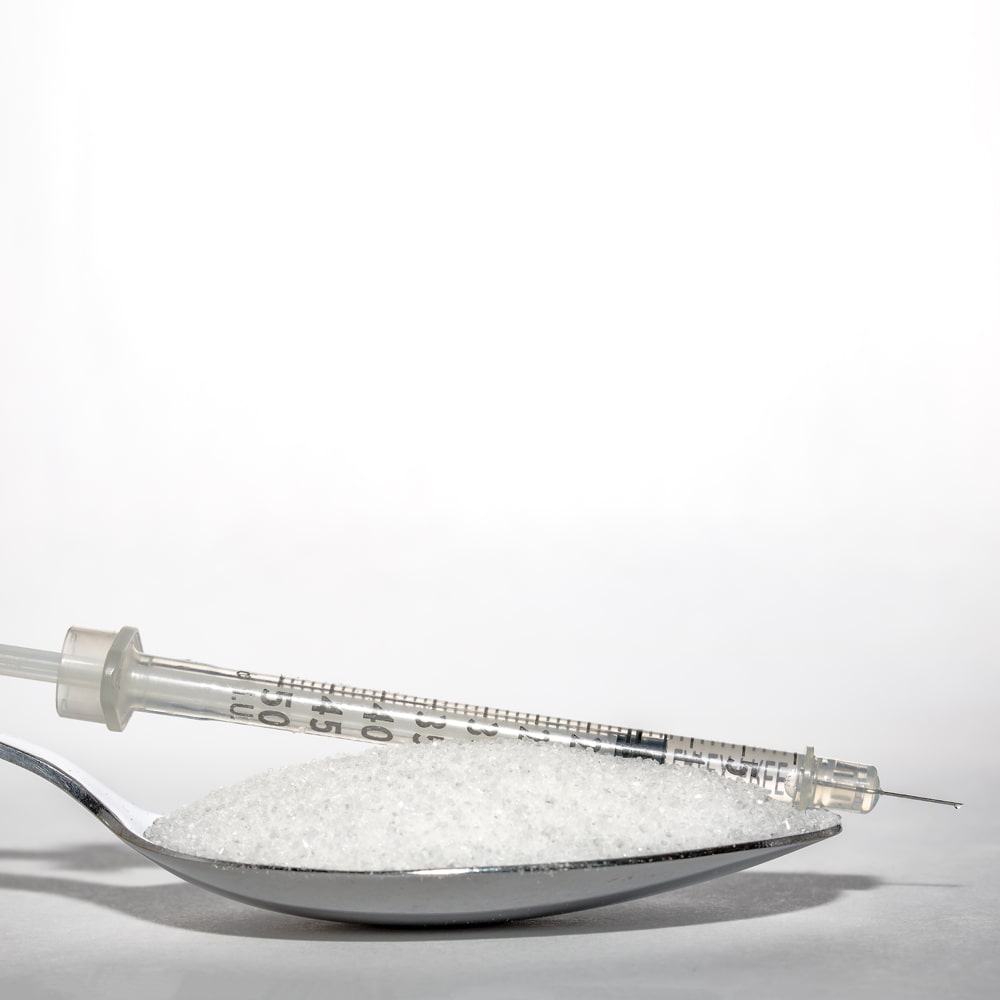
Diabetes, Spoon, sugar and insulin syringe.
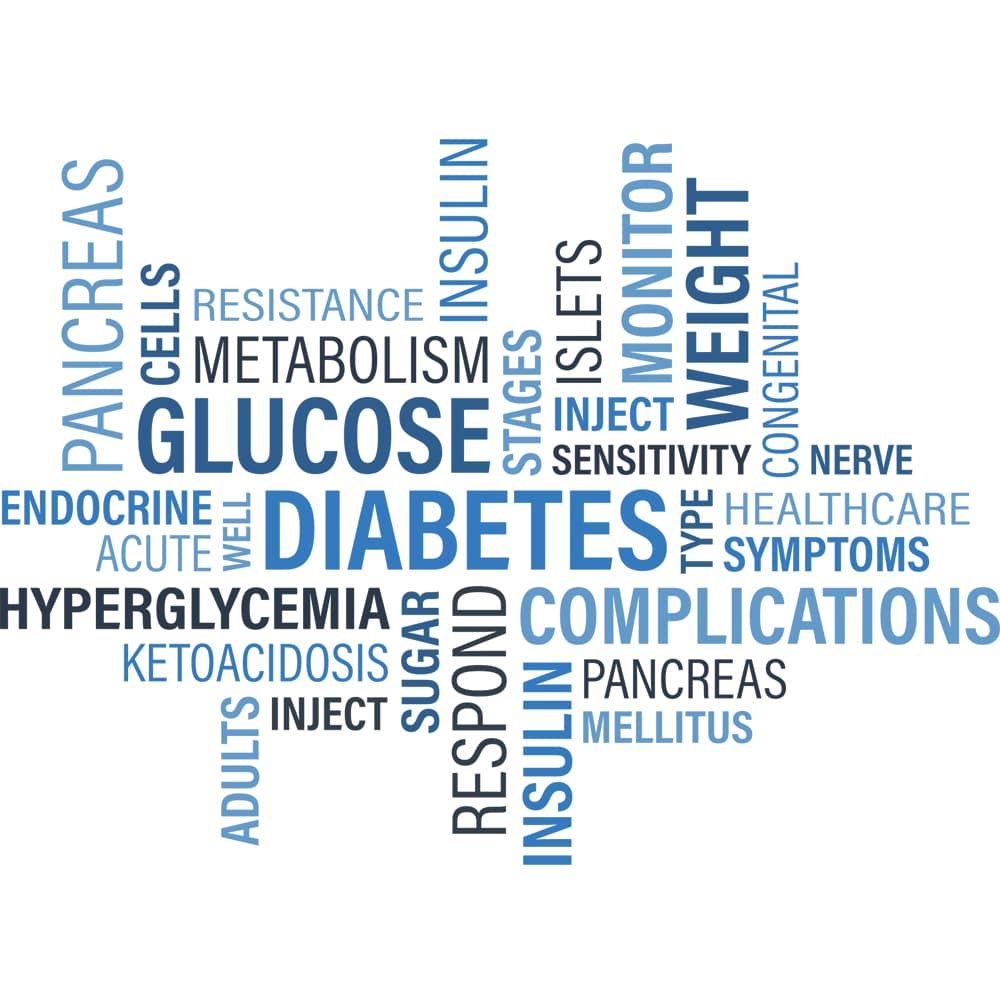
Diabetes Insulin Hyperglycemia
Ketoacidosis
In contrast to hypoglycaemia, blood sugar levels rise in a condition called ketoacidosis. Type 1 and type 2 diabetics in advanced stages are particularly at risk. An undetected ketoacidosis can lead to a complete loss of control of the metabolism. This can mean danger to the life of the person affected. Checking blood glucose levels is also important during illness, because in most cases the insulin level rises sharply during various infections with fever. It makes sense to increase the short-term acting hormone insulin. A so-called ketone test can be carried out if there is a concrete suspicion.
The Diabetes Information Service has summarised which measures have to be taken in case of hypoglycaemia or ketoacidosis and how to prevent the loss of control.
Intensity of blood glucose control
The required frequency of blood glucose control depends on several factors and on the therapy goal. The factors include, for example, individual fluctuations in blood glucose levels. The type of therapy is also important. For diabetics who have to inject themselves with insulin, a higher intensity of control is necessary. Often, those affected check their blood glucose levels up to seven times a day. Normally, measurements are taken at least before going to bed, before driving and before each meal. Measurements need to be taken much less often if the doctor has prescribed pre-determined amounts of insulin as injections or if the sugar level is particularly stable. Then a weekly profile of the blood glucose level is usually sufficient. To create this profile, several measurements of the blood glucose are taken on one day. Some type 2 diabetics take blood sugar-lowering medication. In this case, blood glucose checks are often only needed every few months.
